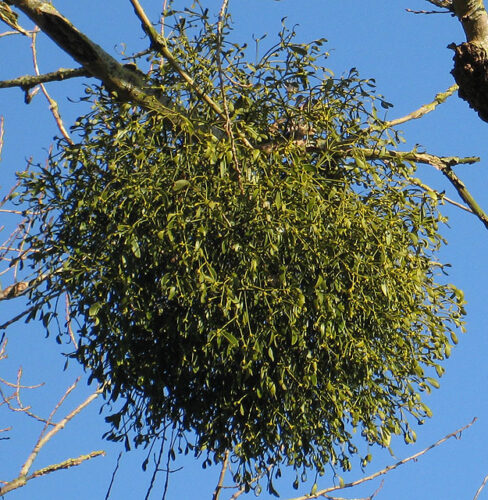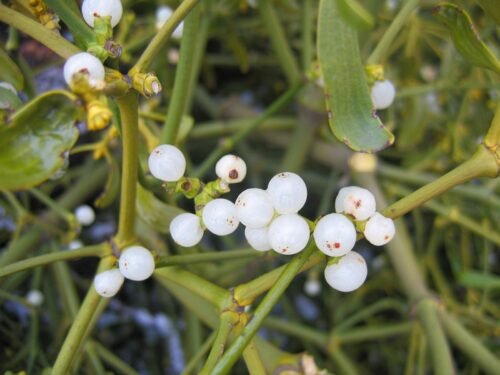Mistletoe, with its leathery leaves, is an evergreen plant in the sandalwood family.
Do not confuse European mistletoe (Viscum album) with American mistletoe (Phoradendron tomentosum)
Do not confuse with:
Witch’s broom
You are viewing the mobile-adapted version of the page.
The one for tablets, laptop and desktop also provides general information, such as origin, toxicity and cultivation.
Mistletoe (Viscum album) – European mistletoe – is an evergreen plant in the sandalwood family (Santalaceae). The mistletoe is a hemiparasite: the plant lives at the expense of its host by rooting in a tree branch and absorbing plant juices from the tree. Because the mistletoe depends on photosynthesis for energy – unlike obligate parasites – the mistletoe is hemiparasite. Mistletoe is found throughout the British Isles and much of Europe.
Birds disperse the white, sticky berries by eating the berries on a tree branch. The similarly sticky seeds remain on the branch and germinate.
Mistletoe is most common on app
The American mistletoe or eastern mistletoe (Phoradendron leucarpum) is a species of mistletoe in the Viscaceae / Santalaceae family. It’s native to Mexico and the continental United States.
Bugs
Mistletoe is not very susceptible to pests.
Fungi & diseases
Mistletoe is not easily affected by fungi and diseases.
Other
Mistletoe occur on:
- poplars (but not on black poplars)
- apple tree
- oak
- maple
- robinia
- Scots pine
- hawthorn


